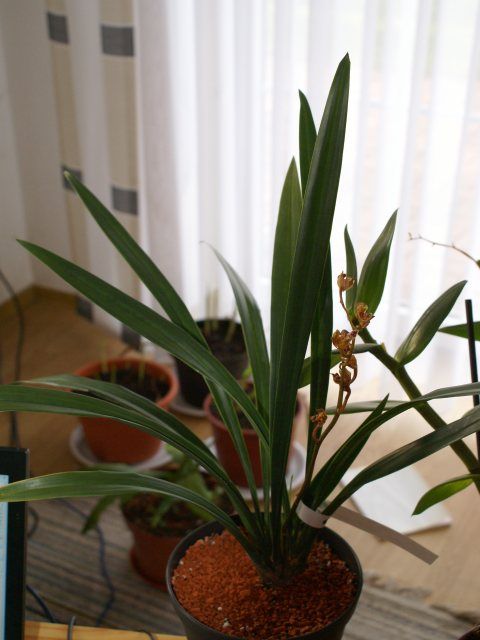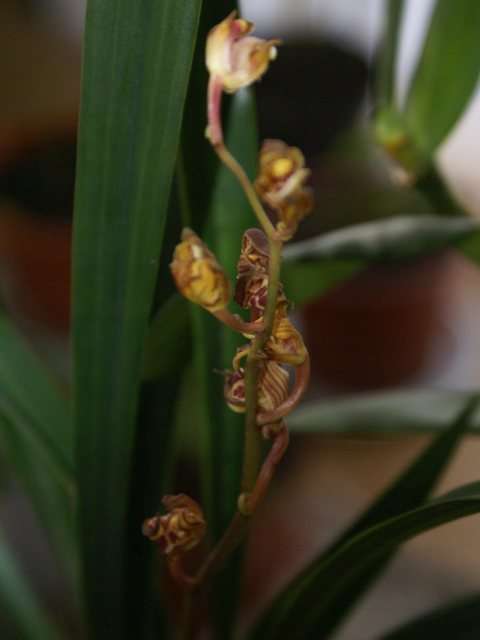I read the following in the Peoria OS newsletter, and thought of your plant, Dido. I wonder if this could be the problem:
"Orchid Blossom Midges: The orchid blossom midge is a member of the gall midge family (Cecidomyidae), so named for the galls that form in plants attacked by some species during their larval stage. The orchid blossom midge is polyphagous (feeds on many types of plants) and will attack orchid buds and flowers. This can cause bud blast, as well as damage and deformity to the developing floral tissues. Because the midge larvae flourish in conditions with high humidity and require a damp medium in which to pupate, they thrive under conditions ideal for growing orchids.
Life Cycle: The small, flying adult midges lay large quantities of eggs in lower buds. The eggs and developing larvae are virtually undetectable inside the closed bud, until the damage from the feeding larvae becomes evident. Midge larvae are small (approximately 7/64–1/8 inch [2.5–3 mm] in length), white, and resemble fungus-gnat larvae in appearance. When present, as many as 30 insects have been found in a single flower bud. This is their most visible stage. At maturity, larvae jump from the plant to the surface of the potting medium by curling and uncurling their bodies in a springlike fashion for propulsion. They then burrow into the top layer of the medium to pupate. The tiny adult flies emerge about three weeks later.
Symptoms: The midges have been found primarily on Dendrobium and Vanda, with recent reports on Cattleya, Cymbidium and Phalaenopsis, and may affect other orchids as well.
Controls: While methods for controlling the midge have not been fully determined, effective sanitation is important. Remove all damaged, molding or dropped buds. Eradicate weeds in the growing area, as well as in and around plants. Applications of pesticide may be useful, such as Diazinon granules to the medium to eradicate burrowing larvae and Orthene (used with a penetrant such as LI 700) to foliage and buds to control egg-laying adults and larvae. Repeat the spraying of foliage and buds weekly for three to four weeks to eliminate the pest at each stage of its development. While the above pesticides may prove effective, results have not yet proven conclusive."





















































